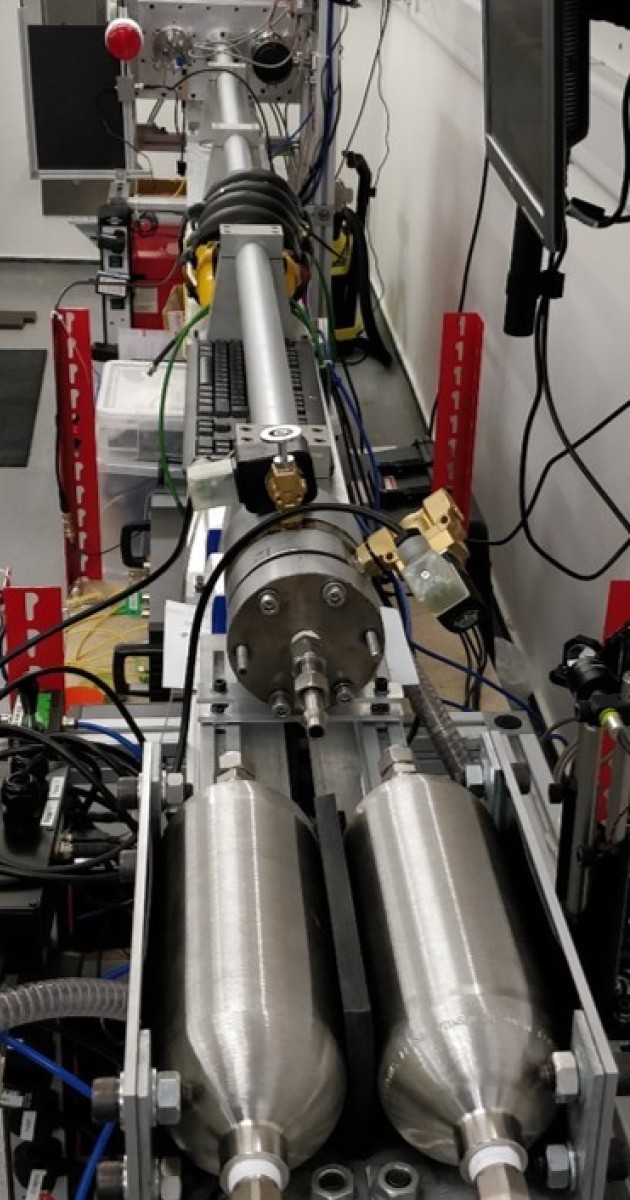 Our single-stage 32 mm bore gas-gun system can accelerate a sabot along its 3 m long barrel using compressed air or helium to achieve exit speeds of up to 700 m/s. The sabot can carry the projectile of interest down the barrel and gets arrested by a sabot stripper at the end of the barrel allowing well-controlled free travel of the projectile. We have used our gas-gun system to accelerate fragment-simulating projectiles and soil against soft and skeletal tissue and protective fabrics in order to characterise injury sustained and protection offered, respectively.
Our single-stage 32 mm bore gas-gun system can accelerate a sabot along its 3 m long barrel using compressed air or helium to achieve exit speeds of up to 700 m/s. The sabot can carry the projectile of interest down the barrel and gets arrested by a sabot stripper at the end of the barrel allowing well-controlled free travel of the projectile. We have used our gas-gun system to accelerate fragment-simulating projectiles and soil against soft and skeletal tissue and protective fabrics in order to characterise injury sustained and protection offered, respectively.
Technical Specifications
- Media: Compressed air or helium
- Firing mechanisms: Single and double diaphragm
- Speed at impact: up to 700 m/s
- Compatible with projectiles of varying shapes and sizes.
Previously tested
- Fragment simulating projectiles: right circular cylinder, chisel-nosed cylinder, and ball bearing; sizes 2.5 – 10 mm diameter; mass 0.15 – 6 g
- Sand: sizes 0.1 – 1mm; varying moisture content
Sensors
high
____________________________________________________________________________________________________________________
Publications
Nguyen TT, Pearce AP, Carpanen D, et al. Experimental platforms to study blast injury. J R Army Med Corps Published Online First: 2018. doi:10.1136/jramc-2018-000966
Nguyen TTN, Carpanen D, Stinner D, et al. The risk of fracture to the tibia from a fragment simulating projectile. J Mech Behav Biomed Mater 2020;102:103525. doi:10.1016/j.jmbbm.2019.103525
Rankin IA, Nguyen TT, Carpanen D, et al. A New Understanding of the Mechanism of Injury to the Pelvis and Lower Limbs in Blast. Front Bioeng Biotechnol 2020;8:960. doi:10.3389/fbioe.2020.00960
Nguyen TTN, Carpanen D, Rankin IA, et al. Mapping the Risk of Fracture of the Tibia From Penetrating Fragments. Front Bioeng Biotechnol 2020;8. doi:10.3389/fbioe.2020.544214
Rankin IA, Nguyen T-T, McMenemy L, et al. The Injury Mechanism of Traumatic Amputation. Front Bioeng Biotechnol 2021;9:311. doi:10.3389/fbioe.2021.665248
